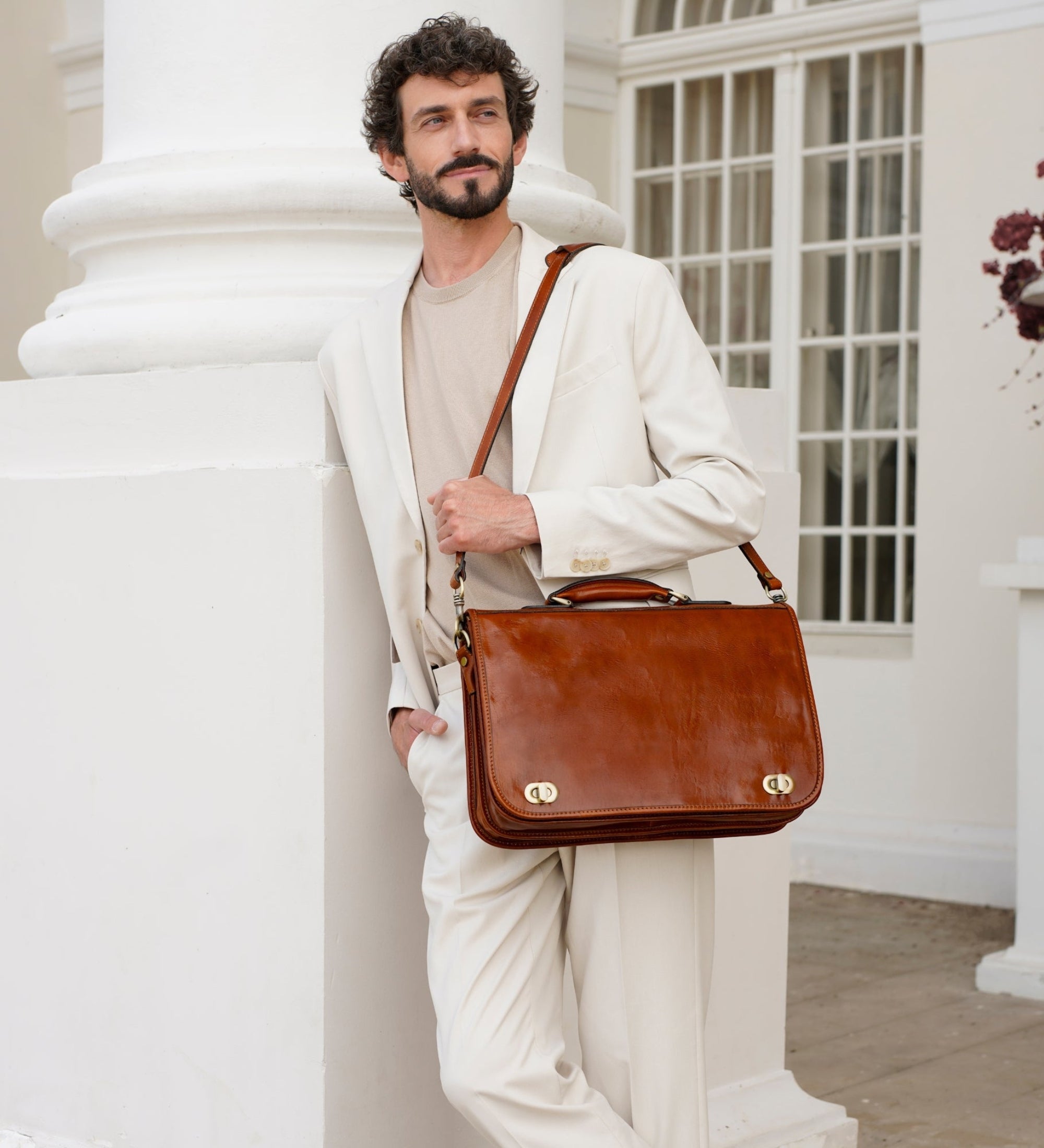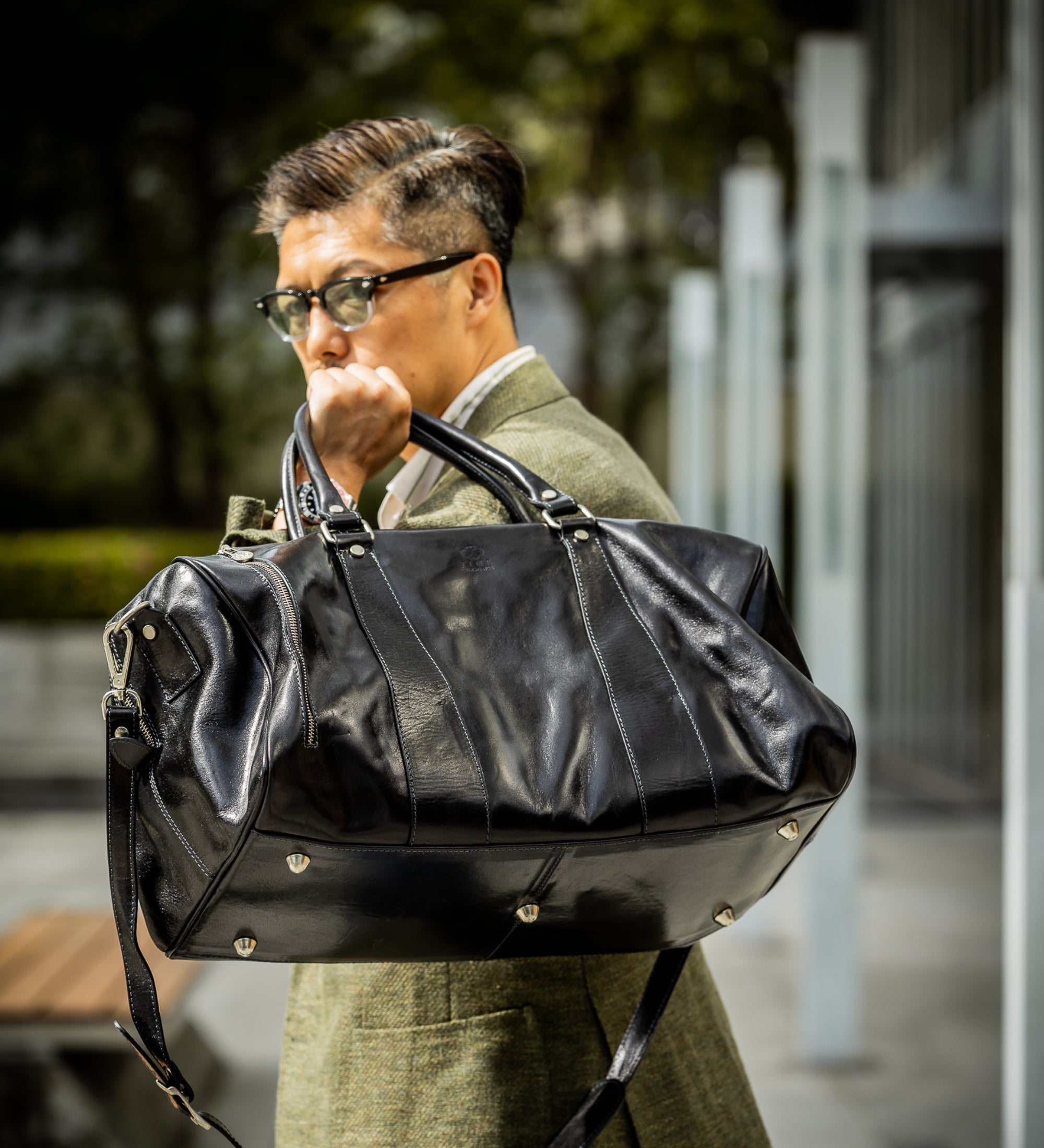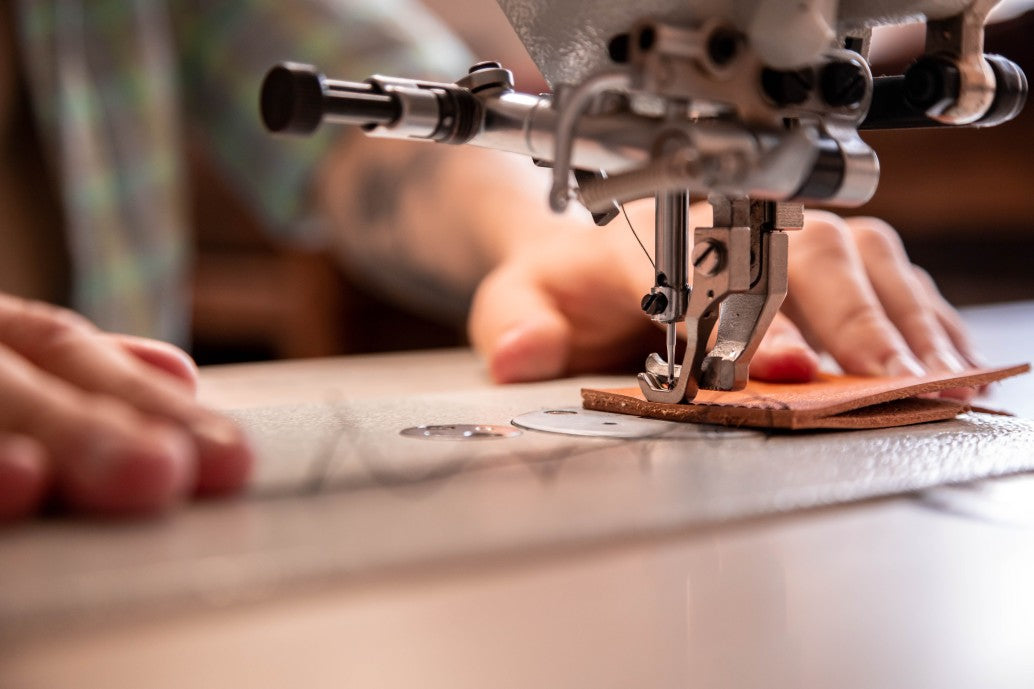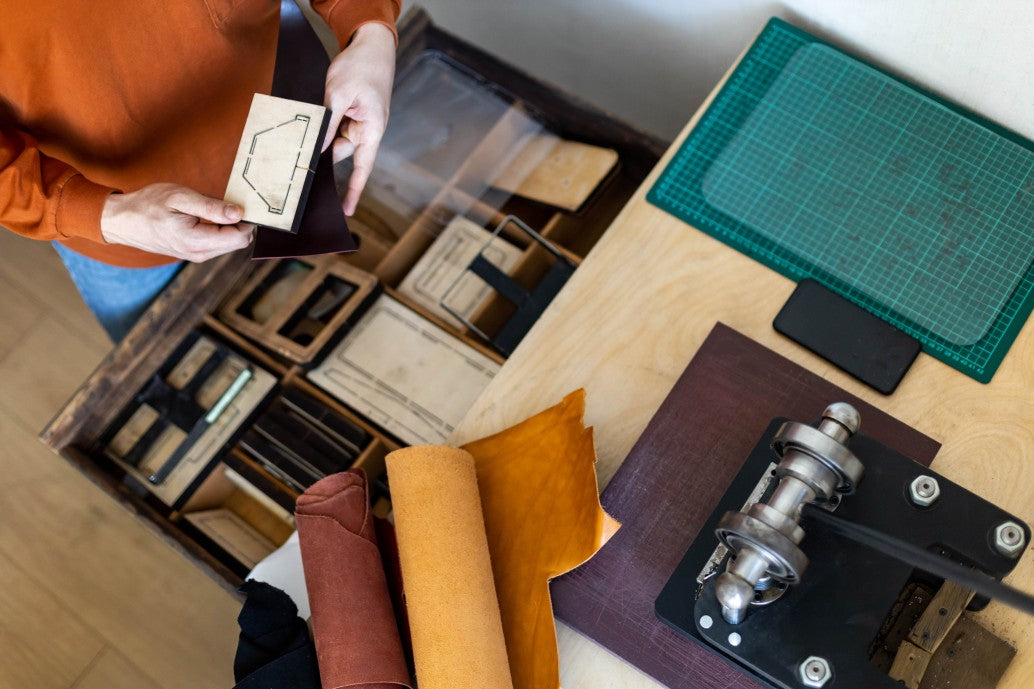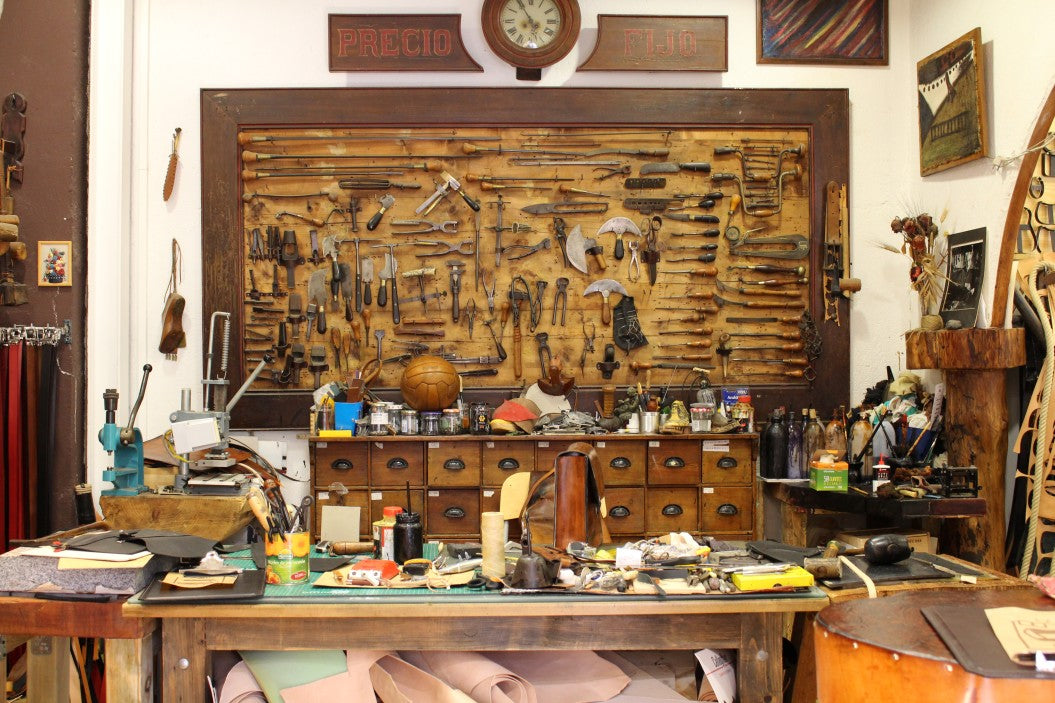
Which Leather is Best for Bags?
Choosing a new everyday carrying companion becomes easy when leather is there in the options. Even if you wear it every day, leather is a timeless classic that will survive for years. It has many types ranging from the durable to very soft ones that almost everybody could find their best pick.
So, when it comes to deciding on the type, which leather is best for bags? It's important to feel secure about purchasing a high-quality leather bag. That is why we're here to explain the different types in detail before you. So, without waiting any longer, let's begin!
Faux Leather
Faux leather is one of the various names for synthetic or artificial leather. The production of faux leather begins with a fabric foundation, such as polyester. Wax, dye, polyvinyl chloride (PVC), or polyurethane are used to give the fabric an imitation leather gloss and feel.
Although it is intended to resemble real leather, the surface of synthetic leather is smooth. Since, a machine-made piece will have a consistent, even texture pattern. When compared to real leather, faux leather feels cold and artificial. However, it is not as durable as real leather. So, when it does wear out, it does so in an unappealing manner. On the other hand, it is far less expensive than genuine leather.
Pros
- Economical
- Require Little To No Maintenance
- Stain-Resistant
Cons
- Not breathable
- Vulnerable to tears
Full-Grain Leather
Full-grain leather is the best grade leather available. It is generated from the outer layers of the hide of an animal and comes from the layer of skin just after the hair, making it more durable. Its production is divided into preparation, tanning, and crusting. A fourth stage may give the leather a surface coating or polish.
Full-grain leather displays all of its natural flaws and defects, which many believe give the material character. But it is highly durable and often outlasts cotton by 5 times. Full-grain leather can last for decades with proper care and usage.
Pros
- Most Durable
- Beautiful Natural Look
- Develops a Rich Patina
Cons
- Visible imperfections
- Expensive
Cowhide Leather
Cowhide is genuine leather, loved by many consumers due to its softness. It is the byproduct of the cattle business. Approximately 65% of all leather comes from cattle animals. Cowhide is manufactured by skinning, applying salt, tanning, and drying. They are tanned while retaining their original color and form. Chrome tanning is the most prevalent method for tanning cowhide since it is inexpensive and easy to perform.
Its leather is highly durable and aesthetically pleasing. Premium cowhide leathers are the softest leathers with the highest appearance, consistency, and no rectified grains. Moreover, it typically has a reasonable price range and possesses all the desirable attributes of high-quality leather.
Pros
- Flexible
- Excellent Strength
- Resistant to Mechanical Damage
Cons
- Little heavier
- Requires frequent maintenance
Goat Leather
Goatskin, often known as Moroccan leather, is softer than full-grain leather. It is known to be one of the most robust leathers due to its softness, strength, and lightweight properties. As the name suggests, goat leather is manufactured from a goat's hide.
Based on looks, goatskin has a tight, grainy texture, mimicking the unique ridges of this particular sort of leather. Also, goatskin's natural characteristics allow it to be not only soft and supple but water-resistant and extremely durable.
Pros
- Soft Surface
- Vintage Look
- Water-Resistant
Cons
- Stretch with age
- Less durable than cowhide
Lambskin Leather
Lambskin is a type of leather, similar to calfskin, produced by tanning the hides of only young sheep. It is far more fragile than conventional leather; thus, the tanning process is finished with care, employing gentler processes that result in a silkier finish. The skin is stripped of its hair and then tanned. The leather is tanned by soaking it in acids for days or even weeks, after which it is colored with various chemicals.
Lambskin leather is significantly lighter than other forms of leather. The silky texture enhances the characteristics of the skin. In general, lambskin is more permeable than other materials. After tanning, lambskin leather is not so durable despite its softness.
Pros
- Buttery Smooth
- Lightweight
- Luxurious Look
Cons
- Expensive
- Not durable
Aniline Leather
Aniline leather is a product of superior quality. Aniline refers to the colors used to create the final product after the hide has been tanned. This procedure distinguishes it from other types. The initial phase involves the preparation of the raw animal hide. After cleansing and depilating the skin, the next step involves tanning. Then, the tanned animal skin is combined with aniline dye in a drum. It takes longer to produce than other leathers.
Aniline leather has obvious scars, stretch marks, and wrinkles, making it the most natural-looking leather. Because aniline leather lacks a pigment-based surface treatment, it is porous yet smooth. This sort of leather is not only resistant to wear and tear, but it also stands the test of time.
Pros
- Breathable
- Extremely High-Quality Material
- Ages Well
Cons
- Stains easily
- A bit tough
FAQs
1. Which is the most durable leather for bags?
Full-grain leather is the best quality and most sought-after leather for bags; it is cut from the thickest and most outer layer of the skin, which gives it its strength. Additionally, full-grain leather develops a rich patina with use. This implies that a bag made of aged full-grain leather is the height of elegance and quality.
2. What is the best leather for handbags?
Leather handbags made of cowhide leather are considered the greatest quality. Cowhide leather is both incredibly durable and visually beautiful. You can feel the texture of cow skin leather when you touch it.
3. Which leather is good for bags: cowhide or calfskin?
When it comes to bags, calfskin leather is quite durable compared to the weight and thickness of the cowhide. Even though it is thinner, the fibers in calfskin are closer together, making it stronger and more durable.
4. How long do leather bags last?
It takes 100 years for leather to degrade, but no one carries bags for that long. So, if you buy a high-quality leather bag, oiled and stored properly, you may expect it to survive for at least 30 years.
5. Are leather bags expensive?
Leather is the fashion industry's lifeblood. Genuine leather is quite pricey due to its manufacturing process, coloring, and excellent quality, making it extremely durable. However, you can manage to find the one best for your budget from countless types.
Choose the Best Leather for Your Bag!
Now you know all the details about the major types of leather available in the markets. Your ultimate decision for the best leather bag depends on what you're looking for from quality, looks, durability, and price. For making a thoughtful decision, filter out your requirements from the funnel of pros and cons of each type. Select the one that suits your style the best. In the end, the decision is all yours.


